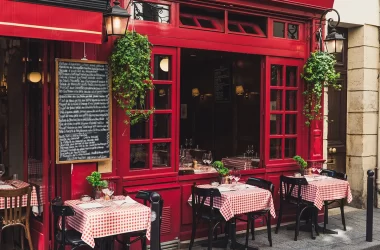A restaurant (French: [no]) or an eatery, in other words a business which prepares and delivers food and beverages to consumers, is usually a public institution where eating, drinking and socializing occur. Many restaurants also provide take-out food and delivery services, but most restaurants are pretty much the same regardless of size, atmosphere and offering. Large restaurants tend to be tourist destinations while mom and pop shops may only be frequented by locals. The term “Restaurant” can also refer to privately owned small enterprises with the added complication of having to share property. Most famous restaurants are franchises, starting from scratch and requiring constant staff and upkeep.
It is no surprise that a good majority of restaurants are cheap and provide low wages or salaries. Customers rely on these affordable prices and usually enjoy the food and drink. Unfortunately, most labor markets do not allow for robust growth opportunities in restaurants. As more restaurants close, competition will increase and existing restaurants may be forced to reduce menu sizes, reduce employee numbers and/or lower quality of food and/or service. This trend will likely continue until economic conditions improve and employment levels start to rise again.
An excellent source for restaurant information is restaurant guide books. These guides offer a wealth of restaurant history, recipes and demographics. They can be purchased through most supermarkets or directly from the publishers. In addition, some libraries have restaurant guide books on hand. For those who don’t have access to these sources, restaurant guide books can also be ordered online.
In the early days, when public transportation was unheard of, cafes and bistros were the only places people dined out. These venues were typically small and operated by individual owners or operators. Because these privately owned dining establishments did not rely on high profits to survive, many were renovated or expanded to include additional space and function as community centers. Today, most cafes and bistros have restaurants attached to them and offer fine dining, family dining, and ethnic cuisine. Some bistros have evolved into coffee shops and others have gone completely food driven.
A final surviving example of early night eating places are sidewalk cafes. These small eating places, which often only accept one or two guests at a time, remain popular through the years because they are economical and convenient. Unlike most restaurants, sidewalk cafes usually serve a simple menu of mainly soups, sandwiches, pastries and other food items.
There are many other examples of early night restaurants that have closed down over the years, but some of them have remained open in their original form. A few of these include diners in diners clubs, butcher shops, coffee houses, taverns, smoking holes, saloons and steakhouses. While it is almost impossible to expect to see all of these businesses still operating today, you can still learn much about how they operated and where they originated by checking out historical newspapers. You can also find a wealth of information online at the websites of historical societies. If you are interested in learning more about some of America’s earliest eating places, then learn more about the historical restaurant guide to help you discover your favorite restaurants now!








